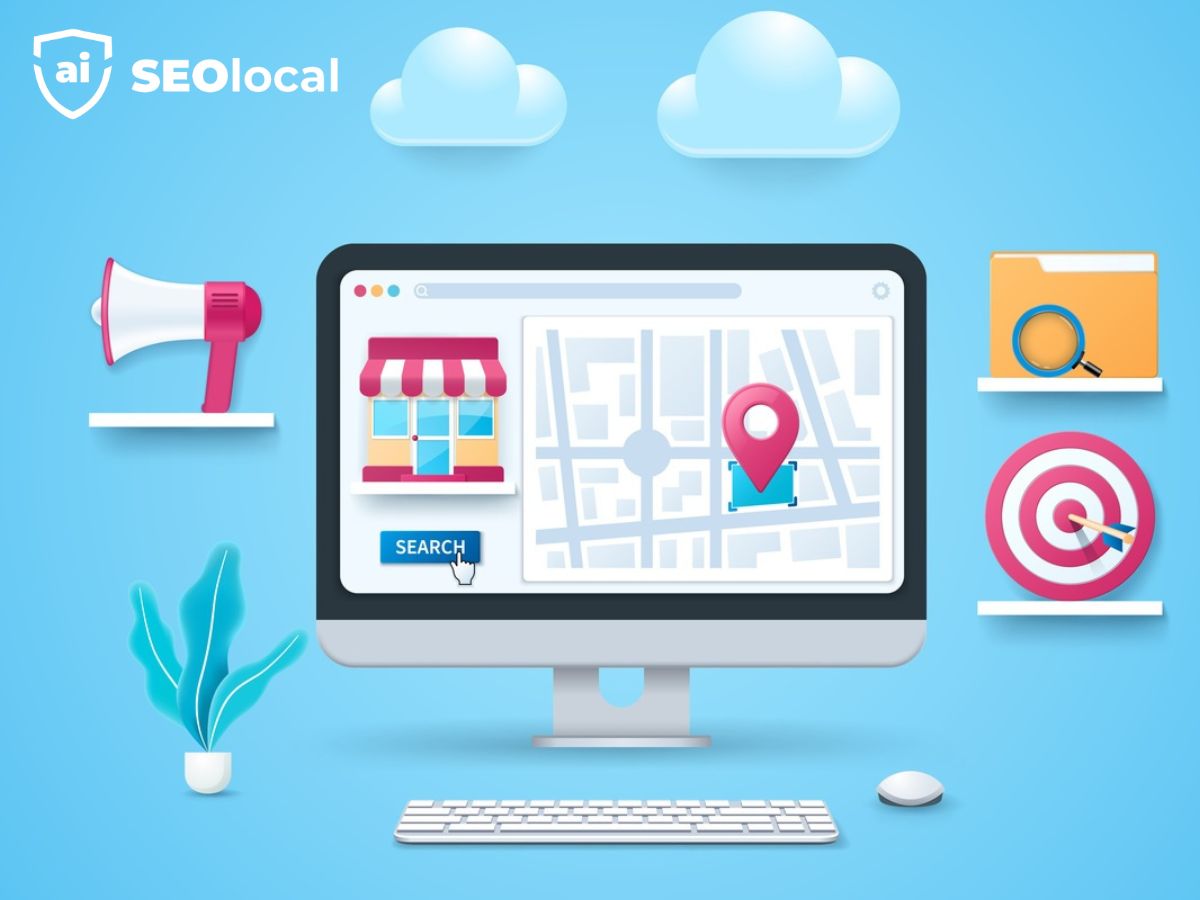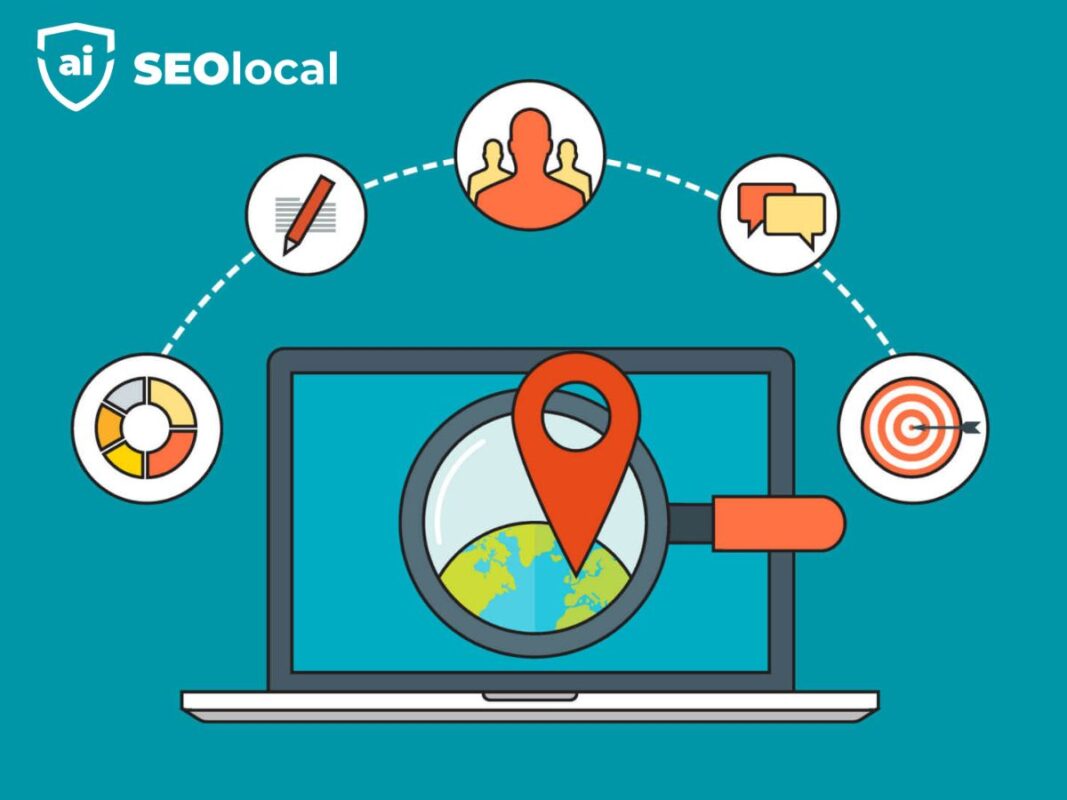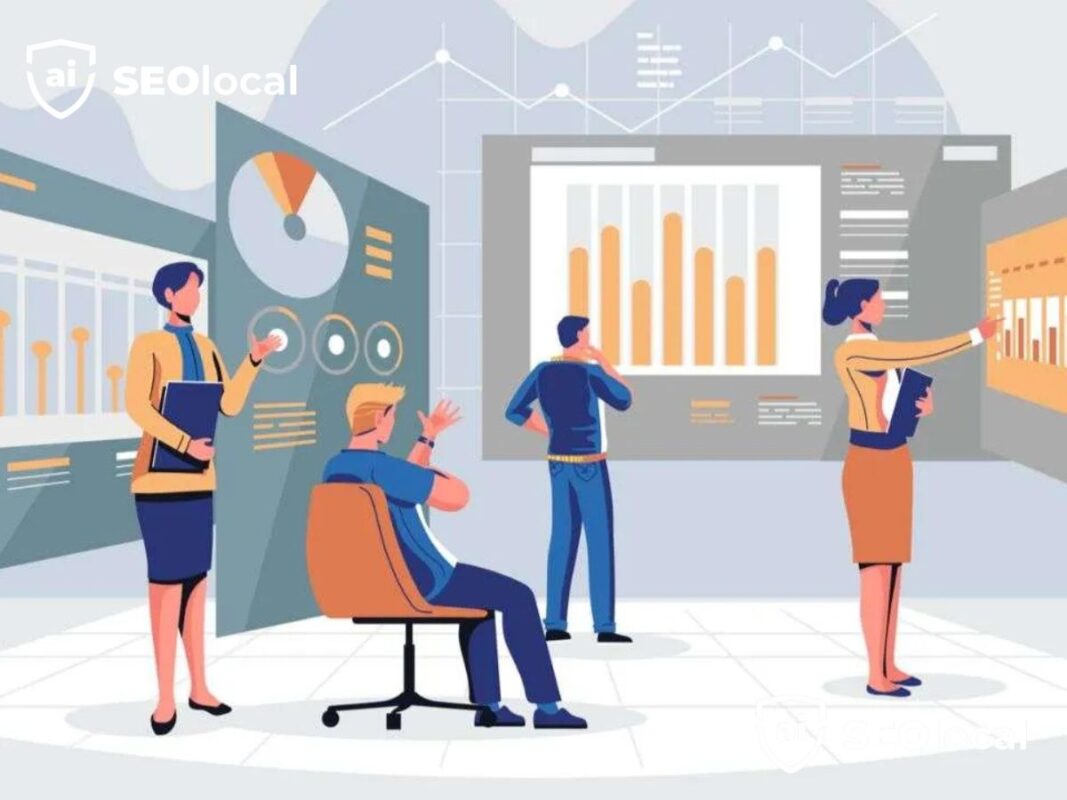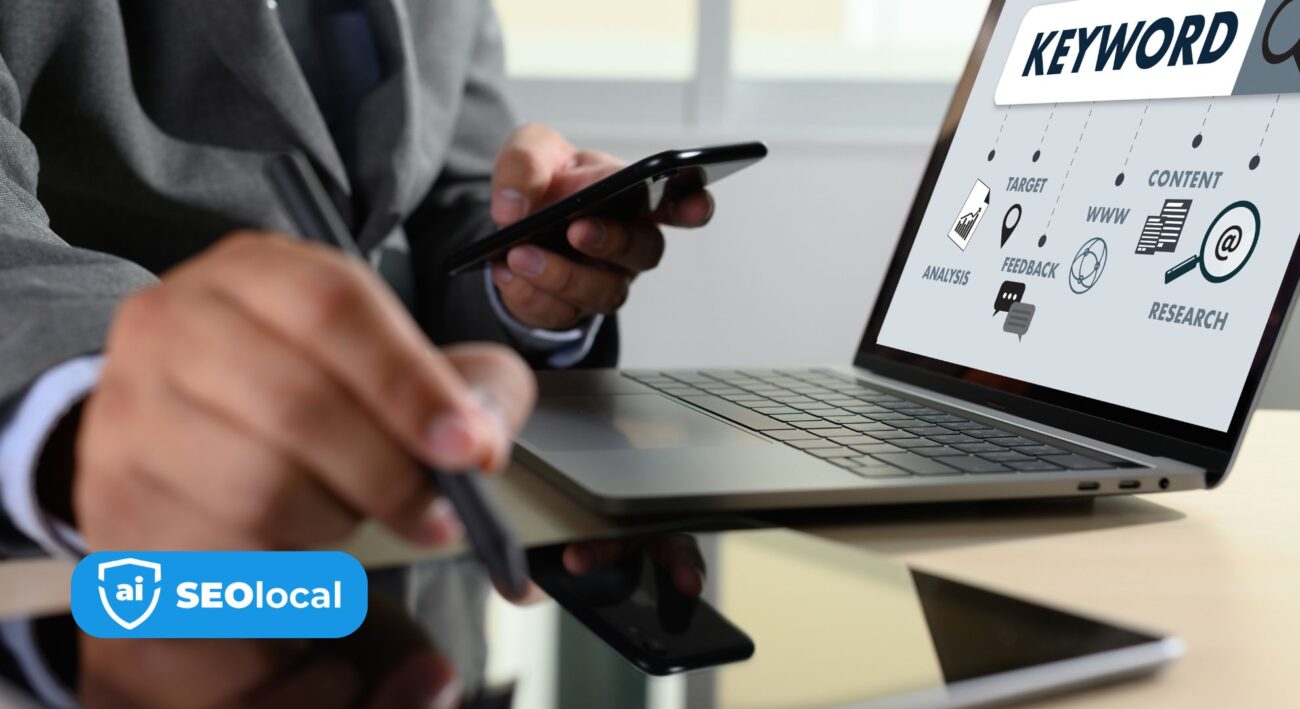- Advanced Local SEO Strategies
- Fundamentals of Local SEO
- Google Business Profile (GBP) Optimization
- Local Keywords and Content Strategy
- Local Link Building
- Local Paid Advertising
- Local Search Ranking Factors
- Local SEO Best Practices
- Local SEO Tools and Analytics
- Local Social Media Marketing
- Online Reviews and Reputation Management
- Technical SEO for Local Businesses
Understanding Proximity Local SEO

Did you know that 47% of Google searches have local intent? This means nearly half of all searches are looking for nearby businesses, services, or products. Your physical location plays a critical role in how visible you are online.
Search engine optimization for local businesses focuses on three key factors: proximity, relevance, and prominence. These elements determine how well your business ranks in local search results. While relevance and prominence are important, proximity often acts as the deciding factor.
Geographic limitations can pose challenges, but advanced techniques can help you overcome them. For example, Google uses latitude and longitude coordinates to pinpoint your exact location. This precision ensures your business appears in the right searches.
At SEO Local, we specialize in helping businesses enhance their online presence. Whether you’re a small shop or a growing enterprise, optimizing for local search can drive significant traffic to your website.
Key Takeaways
- 47% of Google searches have local intent, making local SEO essential.
- Proximity, relevance, and prominence are the three pillars of local search rankings.
- Geographic limitations can be overcome with advanced optimization techniques.
- Google uses latitude and longitude for precise location targeting.
- Optimizing for local search can increase traffic by 30-50%.
What Is Local SEO and Why Does It Matter?
Local SEO is a game-changer for businesses targeting nearby customers. It focuses on optimizing your online presence to attract more foot traffic and inquiries from your area. With 76% of foot traffic driven by local search, it’s clear why this strategy is essential for businesses with a physical location.
Family law firms, for example, see a 40% increase in client inquiries when they implement local SEO. This approach ensures your business appears in relevant searches, especially for “near me” queries, which have grown by 150% since 2019.
The Role of Local SEO in Digital Marketing

Local SEO plays a vital role in digital marketing by connecting your business with nearby customers. It ensures your services are visible in the “local pack,” the top three results that dominate mobile searches. Integrating your Google Business Profile enhances map visibility, making it easier for customers to find you.
Case studies, like Rocket Clicks, show how location-based strategies can drive success. With a 3:1 ROI ratio, investing in local SEO often outperforms general SEO efforts.
How Local SEO Differs From Traditional SEO
Traditional SEO targets a national or global audience, while local SEO focuses on hyper-targeted visibility for geo-specific searches. Mobile-first indexing further emphasizes the importance of local SEO, as most searches happen on mobile devices.
Here are key differences and benefits:
- Targets nearby customers, increasing foot traffic.
- Appears in the “local pack” for mobile searches.
- Builds trust through online reviews, which 88% of consumers trust as personal recommendations.
By focusing on local SEO, you can ensure your business stands out in your community and attracts more customers.
The Three Pillars of Local Search Rankings
Your business’s location can make or break its online visibility. Search engines prioritize three key factors: proximity, relevance, and prominence. These elements determine how well you rank in local search results.
Businesses within a 5-mile radius receive 35% more clicks. This highlights the importance of optimizing for these pillars. Let’s break down each one and how it impacts your rankings.
Proximity: The Geographic Advantage
Proximity accounts for 28% of local ranking factors. The closer your business is to the searcher, the higher your chances of appearing in results. For example, urban businesses within 400 meters often get walk-in priority.
To calculate your effective service radius, use mapping tools like Google My Business. This helps you understand your geographic reach and optimize accordingly.
Relevance: Matching User Intent
Relevance ensures your business aligns with what users are searching for. Semantic search plays a key role here. It interprets location modifiers like “near me” to deliver accurate results.
Schema markup can enhance your relevance. Adding structured data to your website helps search engines understand your offerings and location better.
Prominence: Building Your Online Reputation
Prominence is about how well-known your business is online. It follows a 3:2:1 ratio: reviews (3), backlinks (2), and citations (1). Positive reviews are especially crucial, as 64% of users trust businesses with optimized profiles.
Consistency in your NAP (Name, Address, Phone) information is vital. Ensure your details match across all platforms to build trust and improve rankings.
| Pillar | Impact | Key Strategies |
|---|---|---|
| Proximity | 28% of ranking factors | Calculate effective service radius |
| Relevance | Matches user intent | Use schema markup |
| Prominence | Builds online reputation | Focus on reviews, backlinks, citations |
How Proximity Affects Your Local Search Visibility
Search engines prioritize proximity when ranking local businesses. The closer you are to your audience, the higher your chances of appearing in search results. This is why understanding how search engines measure distance is crucial for optimizing your visibility.
How Search Engines Measure Distance
Search engines use advanced algorithms to calculate the distance between your business and the searcher. Factors like latitude, longitude, and population density play a role. For example, businesses in urban areas often have a smaller effective ranking radius compared to rural ones.
Tools like Google’s Location Changer allow you to simulate location-based search results. This helps you understand how your website performs in different areas. Knowing your effective ranking radius can guide your optimization efforts.
The Proximity Audit: Assessing Your Ranking Potential
A proximity audit evaluates your business’s ranking potential based on five key factors:
- Google Business Profile location match
- Population density in your area
- Physical distance from your target audience
- Backlinks and referring domains
- Citation density across platforms
For instance, a Princeton roofing company increased its visibility by focusing on a 4-mile radius. Conducting a proximity audit can reveal similar opportunities for your business.
When Location Can’t Be Changed: Alternative Strategies
If your location limits your visibility, there are alternative strategies to consider. Satellite locations, service area pages, and community partnerships can expand your reach. Localized content, tailored to specific neighborhoods, can also boost your visibility by 1.5-mile increments.
Urban businesses often benefit from a 7:3 ratio of proximity impact compared to rural ones. Tools like GS Location Changer and citation density calculators can help you maximize your ranking potential, even if your location isn’t ideal.
Optimizing Your Google Business Profile for Local SEO
Your Google Business Profile is a powerful tool for attracting nearby customers. A complete and optimized profile can increase clicks by 7x, making it essential for businesses targeting local audiences. By focusing on setup, verification, and quality content, you can enhance your visibility and engagement.
Setting Up and Verifying Your Listing
Start by creating your Google Business Profile. Ensure all 14 essential criteria are met, including accurate business name, address, phone number, and category. Verification is crucial; follow Google’s steps to confirm your listing. Verified profiles are more likely to appear in search results.
Geotagging your business photos can improve visibility. Use tools to add location data to your images, making them more relevant to local searches. Leverage Google Q&A to insert local keywords naturally, answering common customer questions with targeted phrases.
Enhancing Your Profile With Quality Content
Posts with location-specific keywords see 29% higher engagement. Use a 3:2 ratio for offers versus educational content to keep your audience interested. For example, share promotions three times and educational tips twice in a week.
Optimize your service area descriptions to send clear proximity signals. Highlight neighborhoods or cities you serve to attract nearby customers. Case studies show businesses using tools like Bright Local see a 68% increase in reviews, boosting their online reputation.
| Essential GBP Completion Criteria | Best Practices |
|---|---|
| Business Name | Use exact legal name |
| Address | Ensure accuracy for verification |
| Phone Number | Include a local number |
| Category | Choose the most relevant option |
| Photos | Geotag for local relevance |
Avoid prohibited practices like keyword stuffing or fake reviews. Instead, focus on providing accurate and helpful information. Optimize holiday hours to improve rankings during peak seasons. Use location-specific post captions to connect with your audience effectively.

Advanced Local SEO Optimization Techniques
Maximizing your online presence requires advanced strategies tailored to your area. These methods go beyond basic tactics to ensure your business stands out in search results. By focusing on both on-page and off-page techniques, you can enhance your visibility and attract more customers.
On-Page Strategies for Local Relevance
Start by optimizing your title tags with location-specific keywords. Localized title tags improve rankings by 37%. Use meta descriptions that highlight your area to attract nearby searchers. For example, “Best Plumbing Services in [City Name]” can boost click-through rates.
Create location-specific landing pages for each neighborhood you serve. These pages should include targeted keywords, testimonials, and service details. Schema markup can further enhance your relevance, increasing local CTR by 22%.
Off-Page Tactics to Boost Prominence
Build backlinks from local sources to strengthen your authority. A 5:1 ratio of local to generic backlinks works best. Partner with local news outlets or community blogs to gain exposure. These partnerships can improve your prominence and drive traffic.
Use a 3-tier citation building strategy. Start with major directories like Google My Business, then move to niche platforms, and finally target hyper-local sites. Consistency in your NAP information is crucial to avoid confusion and improve rankings.
The Critical Role of NAP Consistency
NAP consistency ensures your business information is accurate across all platforms. 87% of businesses have inconsistencies, which can harm their rankings. Follow a 4-step process to clean up your citations:
- Audit your current listings for errors.
- Update your NAP details on all platforms.
- Monitor for changes and correct them promptly.
- Use tools like Bright Local to track accuracy.
By maintaining NAP consistency, you build trust with both search engines and customers. This simple yet effective step can significantly improve your local search performance.
Tools to Measure and Improve Your Local SEO
Measuring your performance is key to staying ahead in local search. The right tools can help you track rankings, manage reviews, and analyze competitors. By leveraging these resources, you can refine your strategy and achieve better results.
Tracking Performance With Google Analytics
Google Analytics is essential for monitoring your local search performance. Set up location-specific conversion tracking to see where your traffic is coming from. Use GA4’s local search report to identify trends and optimize your campaigns.
For example, configure GA4 to track “near me” searches. This helps you understand how users interact with your site based on their location. Accurate data ensures you make informed decisions to improve visibility.
Managing Reviews and Customer Engagement
Reviews play a critical role in building trust and attracting customers. Follow the 3:1 response ratio—reply to three positive reviews for every negative one. This shows you value feedback and engage with your audience.
Tools like Podium offer AI-powered review management. They streamline the process, making it easier to respond promptly and professionally. Consistent engagement boosts your reputation and encourages more reviews.
Specialized Local SEO Tools for Competitive Analysis
Analyzing competitors is crucial for staying ahead. Local Viking provides a grid layout to compare your rankings with others. Bright Local focuses on citation building, ensuring your business is listed accurately across platforms.
Here are seven free tools for local keyword research:
- Google Keyword Planner
- Ubersuggest
- AnswerThePublic
- Keyword Tool
- Soovle
- Keywords Everywhere
- LSI Graph
Local Falcon’s heat mapping technology shows where your business ranks in specific areas. This helps you identify gaps and target underserved locations. Competitive analysis templates using Ahrefs filters can also provide valuable insights.
Partner With Local SEO Experts
Navigating the complexities of proximity optimization requires expertise and precision. At SEO Local, we specialize in geo-specific strategies that maximize your visibility. With a 12-year track record, we’ve helped businesses across all 50 states achieve remarkable results.
Our proprietary proximity scoring system ensures your business stands out in local searches. We use white-hat techniques aligned with Google guidelines to deliver sustainable growth. Whether you’re a small business or a large enterprise, our tailored approach guarantees success.
We offer a free proximity audit consultation to assess your current performance. This detailed analysis identifies gaps and opportunities for improvement. Our team has worked with clients in multiple industries, from retail to healthcare, delivering measurable results.
For immediate assistance, connect with us on WhatsApp. Our experts are available to answer your questions and guide you through the process. Partnering with SEO Local means gaining a trusted ally in your journey to dominate local search rankings.
| Service | Benefit |
|---|---|
| Proximity Audit | Identify ranking potential |
| Geo-Specific Strategies | Target local audiences effectively |
| White-Hat Techniques | Ensure compliance with Google guidelines |
| Nationwide Coverage | Support across all 50 states |
Ready to elevate your business? Contact SEO Local today and take the first step toward local search success.
Conclusion
Achieving top search results requires a well-rounded strategy that balances relevance, prominence, and geographic factors. These three pillars work together to improve your visibility and attract nearby customers. While full impact may take up to 18 months, consistent effort ensures long-term success.
Avoid shortcuts like location spoofing, as penalties can harm your rankings. Instead, focus on continuous monitoring to adapt to changes in search algorithms. For businesses with multiple locations, quarterly audits help maintain accuracy and performance.
Implement the strategies covered in this article to strengthen your online presence. Start optimizing today to see measurable improvements in your search results. A proactive approach ensures your business stays ahead in the competitive digital landscape.
FAQ
What is the importance of local SEO for businesses?
Local SEO helps businesses appear in search results when customers look for nearby services. It drives foot traffic, increases online visibility, and connects you with your community.
How does local SEO differ from traditional SEO?
Local SEO focuses on optimizing for geographic-specific searches, while traditional SEO targets broader, non-location-based queries. Local SEO emphasizes tools like Google Business Profile and local citations.
What are the three pillars of local search rankings?
The three pillars are proximity, relevance, and prominence. Proximity refers to geographic closeness, relevance matches user intent, and prominence builds your online reputation.
How does proximity impact local search visibility?
Proximity determines how close your business is to the searcher. Search engines prioritize businesses near the user’s location, making it a key factor in local rankings.
What steps can I take to optimize my Google Business Profile?
Start by setting up and verifying your listing. Add quality content, such as photos, accurate business information, and respond to reviews to enhance your profile’s performance.
What are some advanced local SEO optimization techniques?
Use on-page strategies like optimizing for local keywords, create off-page tactics such as building backlinks, and ensure NAP (Name, Address, Phone) consistency across all platforms.
What tools can help measure and improve local SEO?
Tools like Google Analytics track performance, review management platforms handle customer engagement, and specialized tools like Moz Local or BrightLocal aid in competitive analysis.
Should I partner with local SEO experts?
Partnering with experts can save time and ensure your strategies are effective. They provide insights, manage complex tasks, and help you stay ahead of competitors.














